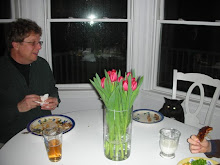
Week 24
In US beer lexicon, Euro Lager is sort of an insult or slur towards the mass-mega-breweries of Europe (they brew massive quantities of good, but not great beer). They are the European counterpart to America’s own “Adjunct” Lagers (Mass-mega-brewers of swill). But upon closer inspection and reflection, along with a bit of hazy nostalgic recollection, maybe the Euro Lager ain’t so bad after all.
We appreciated the noticeable upgrade in taste and quality when we sampled our first Euro Lager (that is if you really like the aroma and taste of beer) and once that door was opened there was no turning back. We thought, “So, this is what real beer is supposed to taste like. Ummm good!”
The Euro Lager was, and still is in many cases, the gateway beer away from the Americanized Adjunct Lagers and into the wonderful world of “Craft” beer. For the most part, the Euro lagers beat the Adjuncts in their beeriness, because they tend to use more and often better quality hops. They use real barley malt, instead of rice, corn and other mealy adjuncts. Oh, some may use a little rice or corn in the brew process to “clarify” the beer, but it’s not meant to be a barley malt substitute. On the other hand, most of the Euro lagers, and let’s reveal some brand names here, share a common and stupid, if not unforgiveable “marketing” mistake; they use green bottles to sell their beer in. Ever smell a sun or light-struck Heineken or Beck’s, or Stella Artois? SKUNKED!!! The head brewers at these breweries must suffer a degree of depression at the end of the day, knowing their efforts will eventually run afoul in the green-bottled death of beer.
He or she must feel a little sense of relief on the days they can or keg their product.
Another common trait of the style is that they (the beers) have neither a strong malt nor hop presence. With a few exceptions, they do not reveal any easily identifiable hop types (Kronenbourg’s Alsatian hops are noticeable to some). You might say, drinking a Euro Lager is akin to drinking a Blended Scotch Whiskey as opposed to drinking a German or Czech Pils which is more like drinking Single Malt Scotch.
Who are these Euro Lagers?
To name a few of the Green Bottle Gang: Heineken from Holland, Grolsch and Oranjeboom from Netherlands, Beck’s and Lowenbrau from Germany, Stella Artois (my mother-in-law’s favorite) of Belgium, Menabrea Birra of Italy, and Kronenbourg 1664 from France. If given a choice, go with the canned or tapped options of these beers, unless you’re absolutely certain they are cool, fresh and have been kept out of any sun or fluorescent lighting.
Others, not in green bottles representing Scandinavia are: Carlsberg and Tuborg Gold from Denmark, Lapin Kulta IV and Koff III or IV from Finland, and Ringnes Pils from Norway.
You can also find loose representations of the Euro Lager style in such faraway places as: Japan (Sapporo Reserve), Brazil (Antarctica Original), Thailand (Singha) and New Zealand (Steinlager).
So, while all of above beers may be different in their own way, they are the same in that they tend to be easy drinkers. Never bland, yet never remarkable. No spectacular hop, yeast, or barley characteristics. They are the quintessential, tapping the palette, gateway beers to the wonderful world of the craft brews of the world.
Hurry down to your local packie! There’s more than likely a 12 pack on sale; doesn’t matter much, which brand. Get those dogs and burgers on the grill or pop your favorite frozen pizza in the oven! It’s Euro-time!
Cheers and Skol!
Quote: “Beer was not made to be moralized about,
but to be drunk” – Theodore Maynard - (1890–1956)




No comments:
Post a Comment